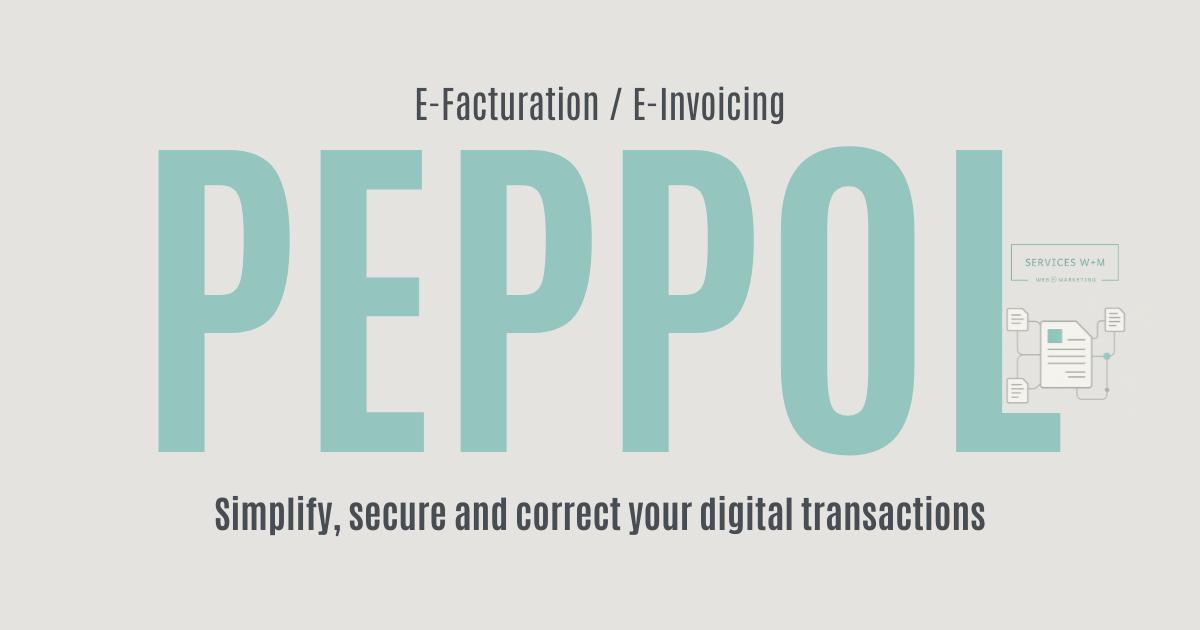E-Invoicing: Understanding, Adopting, and Securing Your Digital Transactions
E-invoicing is redefining how Canadian businesses manage billing and compliance. Learn how to automate, simplify, and secure your digital transactions.
Hello,
Since 2025, digital transformation has entered a new phase: electronic invoicing is becoming the standard for an increasing number of businesses.
Designed to reduce errors, speed up payments, and enhance transparency, e-invoicing is now a cornerstone of modern management.
Beyond regulatory compliance, it’s a strategic opportunity: automate your administrative processes, save time, and project an image of a credible, well-organized, and future-ready business.
In this article:
Why adopting e-invoicing now makes sense.
The key obligations and standards for 2025-2026.
Best practices for choosing and integrating your digital solution.
Enjoy the read, Marketers.
MusicScore : Jeff, the writer, was listening to Still Got This Thing from Alannah Myles.
Something New!
The Monthly Ticket Magazine is now available in PDF — $6.89 taxes included.
E-Invoicing Optimizes Management and Strengthens Digital Trust
Imagine your accountant manually preparing receipts every month for parking-space rentals. Clients pay by transfer, you confirm deposits, then send receipts. A routine full of delays and small errors.
E-invoicing changes everything
With just a few clicks, your website can automatically generate invoices, send payment confirmations, and archive transactions. No manual input required. No more juggling emails, spreadsheets, and accounting software: everything syncs seamlessly.
Beyond the time saved, it’s a clear sign of professionalism. Clients receive transparent, consistent documents, and your accountant can focus on analysis rather than data entry.
E-invoicing isn’t “high tech” reserved for large corporations — it’s a simple, affordable tool that modernizes how you manage revenue, services, and even rentals.
Applying E-Invoicing to Your Business
Running an online commerce system doesn’t have to mean a public storefront. You can design an internal e-commerce platform where each employee logs in to access a private service catalog — rentals, reservations, deposits, etc.
The result: no billing errors, no omissions, no double charges. Every transaction is logged automatically, updates are instant, and monthly reports are generated in seconds.
The Key Requirements for 2025–2026
Quebec is gradually entering the era of e-invoicing. By 2026, several sectors, particularly those dealing with public institutions or major corporations, will need to issue and receive invoices in a structured electronic format. In practical terms, that means invoices will no longer just be emailed PDFs, but standardized data automatically read by clients’ or partners’ accounting systems.
This is known as a compliant e-invoice (PEPPOL format), already in use across Europe and now expanding in Canada.
Why it matters today:
Save time when submitting bids and payments with public institutions.
Avoid manual entry errors.
Increase financial transparency and compliance.
Simplify bookkeeping and tax reporting.
Even though full regulation isn’t mandatory yet, it’s smart to prepare now:
Check if your accounting software is PEPPOL-ready.
Ask your digital provider or webmaster about automation integration.
Test an initial e-invoice flow with a willing client or supplier to get familiar.
More than a technical requirement, e-invoicing is a new business language built on fluidity, traceability, and digital trust. You can visit peppol.org for specifications and updates on upcoming standards.
More lecture about e-invoicing
PEPPOL: The New Language of E-Invoicing
PEPPOL and e-invoicing in Canada: learn how to prepare your business for upcoming digital invoicing standards and structure your invoices according to international (UBL/XML) formats.
How to Choose Your E-Invoicing Solution
Before selecting software, assess your needs:
Your average monthly invoice volume;
Your current accounting system (e.g., Acomba, QuickBooks, Sage);
The level of integration you want (API, automation, client notifications);
Security and compliance requirements (encryption, Canadian data hosting, etc.).
Choose an interoperable solution. One that connects smoothly with your other tools. Also, ensure it’s certified under both Canadian and international standards.
Best Practices for a Smooth Transition
Train your administrative team on how to create and send e-invoices.
Standardize invoice templates to ensure readability and software compatibility.
Test the full process with a few pilot clients before scaling up.
Keep dual formats (PDF + structured e-invoice) during the transition phase.
Communicate clearly with clients: explain the benefits and simplicity of the system.
Security and Digital Credibility
An e-invoice isn’t just a digital copy of a paper document. It’s authenticated, transmitted, and archived according to secure protocols. Each transaction leaves a verifiable digital footprint, protecting both your business and your clients.
In practice, your invoices are:
Timestamped and traceable at every step;
Encrypted during transmission to prevent unauthorized access;
Stored on servers that meet Canadian data-protection standards.
These guarantees reduce the risk of fraud, identity misuse, or post-delivery modifications — issues that increasingly affect SMEs.
But security is only part of the story. E-invoicing also enhances your digital credibility: partners see an organized, professional company using up-to-date tools. Each invoice becomes a digital business card — a reflection of your reliability and brand trust.
Finally, automation improves internal procedures: fewer errors, less paperwork, simplified audits. Adopting e-invoicing means investing in transparent, dependable management — where security and brand reputation work hand in hand.
Conclusion
Secure management builds trust. That’s where growth begins. E-invoicing isn’t just an administrative obligation; it’s a concrete way to save time, reduce errors, and strengthen your company’s image.
By automating your transactions, you improve reliability, streamline reporting, and enhance client relationships. This is freeing time to focus on what truly drives value for your business.
Adopting e-invoicing means choosing clarity, security, and confidence. These are the three pillars of sustainable growth in the digital era.
Thank you for reading and see you on the Blog.
Jeff Maheux
Cr images: Production Services W+M.
Websites - creation, management and design
I edit the content of existing sites via CMS in addition to creating sites with WordPress and Squarespace. I have been producing website content as a webmaster since 1998.
I help companies get their first website up and I improve the performance of existing sites.
Yes, I’m Mr. Analytics and my reaction time to new digital marketing is daily, which allows my clients to have optional and trend-cutting tools.
Follow the content of the marketing blog and participate in the articles by commenting, with respect, on the content of the site, intended for Quebec companies operating in the digital market.
Jeff, A W+M Agent.












Explore the Slow Posting trend of 2025 — publishing less but with greater impact. Brands are slowing down on social media to focus on clarity, meaning, and human connection.